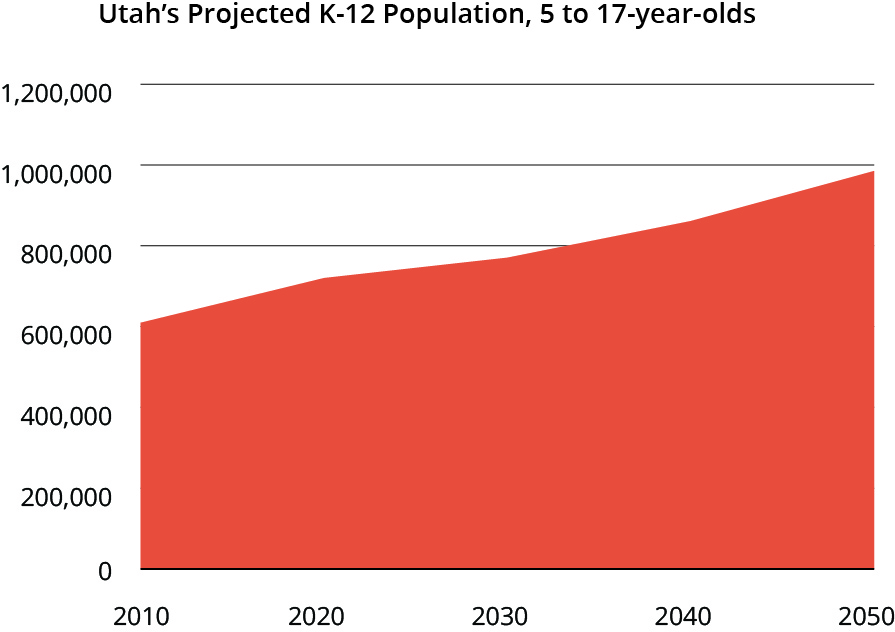The prospect of adding 385,000 school-aged Utahns over the next 35 years seems daunting. With this public school growth will come certain challenges, some of which the state has already been facing over the past two decades. Inadequate policy responses to these challenges may have produced a slide in national academic rankings, a decrease in education funding efforts, and an increase in tuition for college students. One way to address growth in the coming decades is through long-range planning that recognize population change and efforts which provide for a cohesive vision across the state.
FINDINGS:
- Utah is in the middle of the pack for most K-12 test scores and for higher education completion rates. (see page 9)
- Utah once had low per-pupil funding but a high funding effort; both measures now rank low against the national average due in part to policy changes over the past two decades. Higher education is relying more on tuition than in past years. (see pages 8 and 9)
- In highly labor intensive industries – like education – costs increase faster than other industries; accordingly, the cost of education will continue to increase faster than inflation. (see “cost disease” on page 6)
- Utah potentially has a positive outlook for school finances; there will be a larger ratio of working adults to students, which may give policymakers less financial constraint in determining school funding. (see “student dependency ratio” on page 11)
- The state has numerous options for increasing funding in education, though policymakers and voters may not see the need or have the will to implement them. (see pages 12 and 13)
RECOMMENDATIONS:
Utah Foundation recommends that the Utah Governor and the Utah State Legislature follow through with current efforts to develop a statewide, comprehensive 10-year education plan.
- The plan should incorporate elements from Prosperity 2020 and Education First’s five-year plan, the results of the Legislature’s Education Task Force, the Governor’s Education Excellence Commission, and others.
- The plan should consider population growth and student demographic changes.
- The plan should consider the expected changes in dependency ratios.
- The plan should consider charter school enrollment growth and its effects on the public education system as a whole.
- The plan should include measures to increase educational success and protect funding sources.


